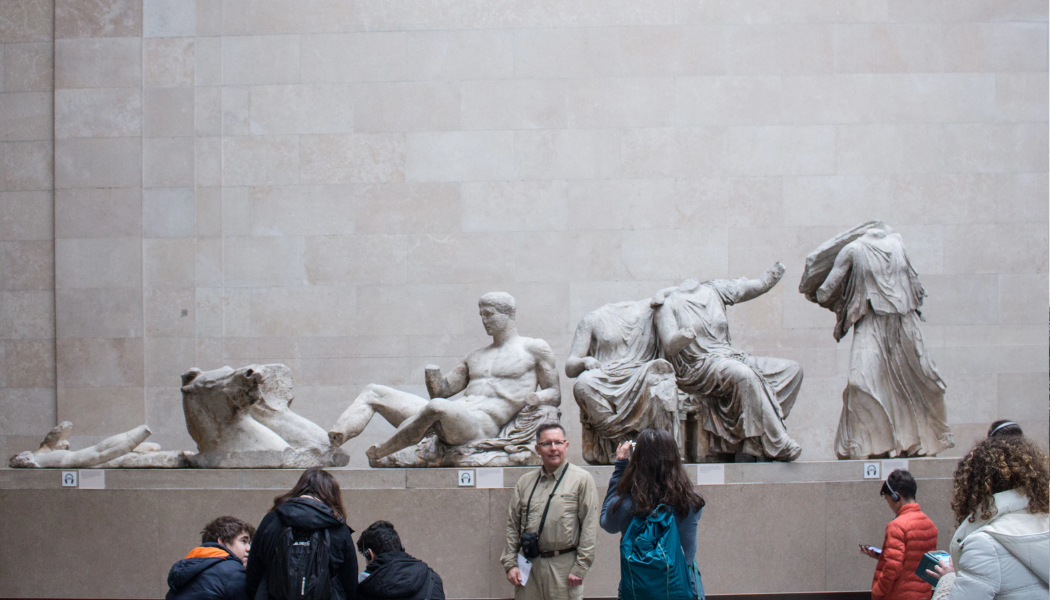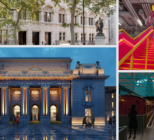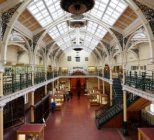A saga at the British Museum
Security, collections, leadership, repatriation, digitisation; this year the British Museum was in the news as a totem for the sector’s biggest questions, but it all started with strikes. It was one of the museums which announced temporary closures in February, after strike by members of the Public and Commercial Services Union (PCS). The strikes, over pay, caused the museum to cancel its planned programme of half-term events. By July, with more strikes planned, a deal was reached which saw a week-long strike called off.
Before July was over, the museum was in the headlines again when a legal challenge was brought against it for the uncredited use of translations in exhibition material.
Chinese Canadian writer, poet, and translator Yilin Wang’s translations of Qiu Jin’s poetry were used by the museum for its ‘China’s hidden century’ exhibition without permissions or acknowledgement. Following a settlement, the museum said it would review its permissions process for temporary exhibitions, particularly with regard to translations, “to ensure that there is a timely and robust methodology underpinning our clearance work and our crediting of contributors going forward”.
Still in July, its director Hartwig Fischer announced he would step down from the position in 2024, initially without a specific reason. And then in August, news broke that a member of staff at the museum had been sacked after items from its collection were found to be “missing, stolen or damaged”. This led Fischer to move forward his resignation, and its Deputy Director Jonathan Williams to “voluntarily step back from his normal duties” during an independent review into the thefts.
Former V&A director Sir Mark Jones stepped into the role of Interim Director in September, and among his first tasks was to appear in front of a Culture, Media and Sport Committee alongside Chair George Osbourne to discuss the thefts from its collection. There, they set out plans to fully digitise the museum’s collection within five years.
But it was in the last months of the year when the museum would reach the broadest headlines, as the Elgin marbles – or Parthernon sculptures – temporarily became a national hot topic. In November, a “pragmatic” deal with Greece, which would see sculptures returned to the country, was hinted at by Osbourne in an annual speech to trustees which sought to tackle its controversies face-on.
No sooner had the words been published but a meeting between Rishi Sunak and Greek Prime Minister Kyriakos Mitsotakis was cancelled hours before it was set to go ahead. The cancellation, reportedly the result of a broken agreement between the Greek and UK PM not to mention sculptures.
As the year ended the museum’s independent review was published, with a long list of recommendations to avoid thefts happening again. Commenting on the findings of the report, Jones said “[n]o-one can pretend this has been an easy period for the Museum, but I have the utmost admiration for the commitment of the staff to building a stronger future for the Museum we all care so deeply about.”
Pressures rise over sustainability
Threaded throughout this year’s sector activity was increased efforts to achieve eco-friendly practices, with sustainability a mainstay in all plans for refurbishments and builds.
The sector also became more organised in its approach. Last month, representatives from 68 UK museums, sector bodies, and funders met for the first UK Museum COP meeting, organised by the The National Museum Directors’ Council and hosted at Tate Modern.
There were more grass-roots sustainability efforts. Shortly before it reopened earlier this year, the National Portrait Gallery revealed the design of its new uniform for visitor experience, retail, security staff and volunteers; a collection of gender-neutral workwear, which is emblazoned with the gallery’s new monogram. Around 20% of the collection was created by recycling otherwise waste material.
National Portrait Gallery unveils new sustainable staff uniforms
And the commitment to sustainability even ran through the Natural History Museum’s rebrand in June, as it revealed a circular design which its Head of Marketing said had been created to “help us highlight how the Museum is finding solutions to the urgent issues that face our planet.”
Natural History Museum reveals new logo inspired by the climate emergency
But both the National Gallery and Natural History Museum were the target of environmental protests this year. A painting damaged by protestors at the National Gallery was examined by conservators after two protestors struck the glass on The Toilet of Venus (‘The Rokeby Venus’) (1647-1651) by Velázquez “with what appeared to be emergency rescue hammers,” and at the Natural History Museum, its Titanosaur skeleton exhibit was ‘painted’ with coloured cornstarch by two protestors, though no lasting damage was caused.
Balancing rising living costs
The political football that is the ‘cost of living’ saw organisations challenged with balancing staying afloat with ensuring visitors returned. In January, The Fusilier Museum, a military museum in Greater Manchester, reduced its admission fees in an effort to help visitors struggling with the cost-of-living pressures.
The National Gallery also announced it was to continue its Pay What You Wish scheme, first launched as a response to the cost-of-living crisis.The London venue claims to be the first national art gallery in the UK to launch such a scheme for an exhibition, beginning for The Credit Suisse Exhibition – Lucian Freud: New Perspectives.
But they were two of a seeming minority, as earlier this month new research into museum admissions pricing and strategy was published by the Association of Independent Museums (AIM).
The research, building on well-referenced work first conducted in 2016, suggested that for the first time, the majority of museums now charge an entry fee, and most have increased their fee since 2016. It said “many” museums have raised prices, but had seen “little negative impact”, and in fact some found that they had been underpriced “for quite some time”.
The Secret Museum Director gets candid
Advisor’s anonymous museum director began publishing entries this year, detailing their sometimes unhealthy relationship with work, an identity crisis over museums’ purpose, the hidden costs of volunteer management, and dealing with the guilt of taking time off.
The feature will continue to detail the highs and lows of running a museum, the challenges faced by the sector at large, and the difficult questions posed by the sector in the new year.
Changes at the top
A big year for senior appointments, though thankfully just one change in Culture Secretary.
Last month, Michelle Charters was announced as the new Head of the International Slavery Museum, and will take up the role in the new year. The community activist becomes the first Black woman to lead the museum.
Another first was seen at National Galleries of Scotland, which announced the appointment of Anne Lyden as its new Director-General. Lyden is the Interim Co-Director of Collection and Research, and will become the first female Director-General of the National Galleries of Scotland in its history from 2024.
At Imperial War Museums, Caro Howell MBE began the new role of Director-General, earlier this year taking over from Dame Diane Lees. In March, a new Director was appointed at The Foundling Museum. Emma Ridgway, the former Chief Curator of Modern Art Oxford and former Barbican Centre curator took up the role in June.
In August Historic England announced Conservative peer Lord Mendoza as its new Chair, and Sir John Soane’s Museum announced the appointment of a new Director, Will Gompertz, who will take up the role on 1 January 2024.
Also announced was the former Director of The National Museum in Oslo took up the role of Director of Tate Modern. Karin Hindsbo took over the role from Frances Morris in September.










